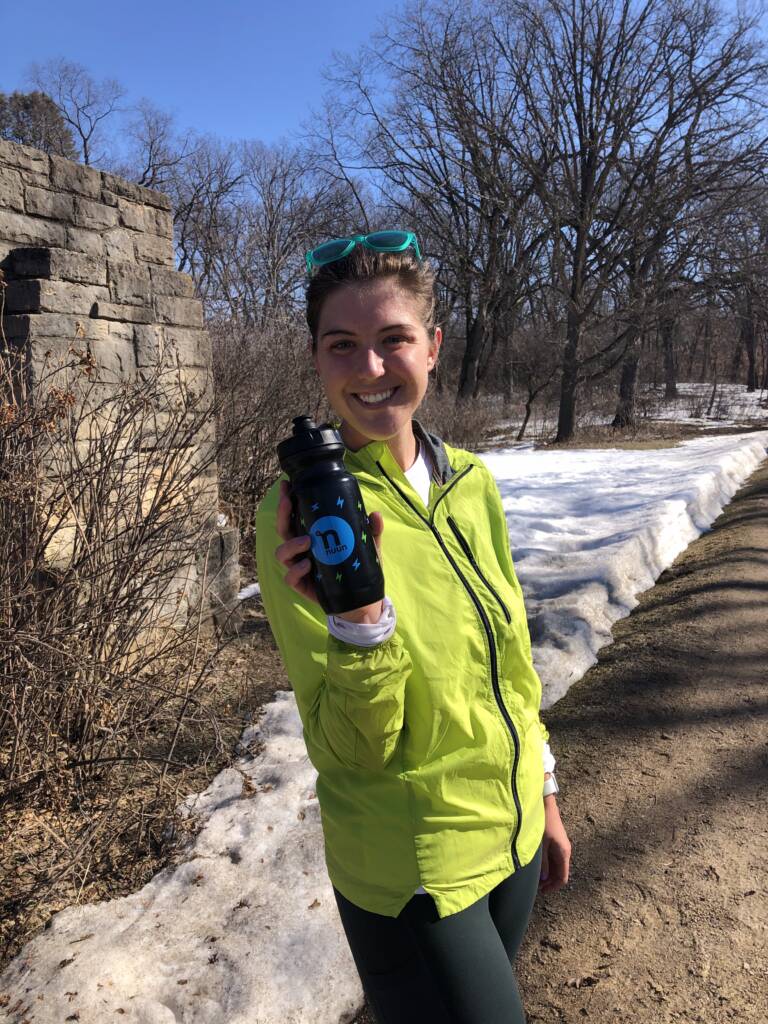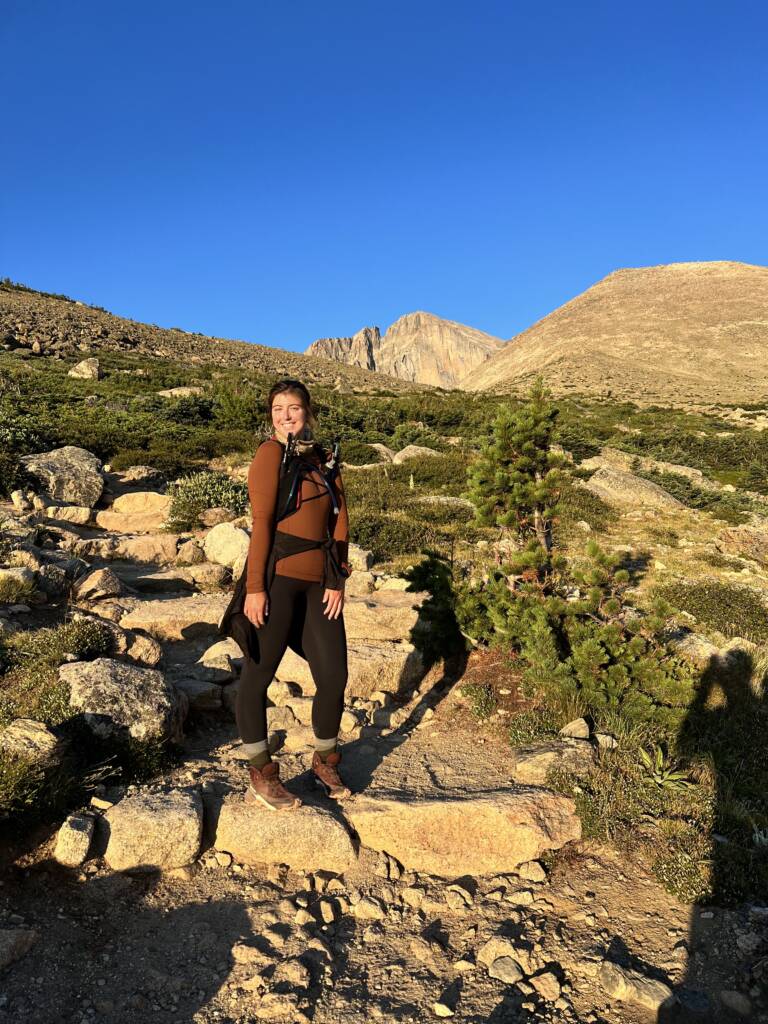It’s summer in Wisconsin! With more hot and humid weather and days spent in the sun, I figured it’s the prime time to discuss an important topic…hydration! Pushing your limits requires proper hydration, no matter what the temperature. Whether you’re trail running, climbing, skiing, or backpacking, hydration becomes far more than just a good habit. Dehydration can often set in quickly, causing fatigue, cramps, and brain fog before you even realize you are dehydrated in the first place. Lucky for you, maintaining proper hydration is something I’ve mastered over the years. Staying hydrated doesn’t need to be a time-consuming task. There are easy ways to keep your body feeling its best while on the go and without major prep work.
Start Early
Hydration is all about prevention, not reaction. Once you become dehydrated, it’s much harder to bounce back. Your performance, energy, and focus can all take a serious hit. That’s why staying ahead of your hydration needs to be a priority. Especially if you’re preparing for a physically demanding event like a long run, a hike, a climb, or any endurance-based activity. Ideally, you should begin intentionally hydrating 24 to 48 hours before your event.
This means consistently drinking throughout the day and not just chugging a bottle right before you start. Waiting until you feel thirsty is already too late; thirst is a delayed signal that your body is already on its way to dehydration. So it is crucial that hydration becomes part of your daily routine.
Tip: During and for the days leading up to a big event, set a hydration reminder on your watch or phone for every 15-20 minutes. All too often you get busy and before we know it, it’s 1pm and you’re still on your first 12oz. Setting a reminder helps you stay on track with hydration and prevents the day from slipping by without enough water.
Hydration is More Than What You Drink
Even at rest, without breaking a sweat or engaging in any physical activity, adults need around 2 to 3 liters of water each day just to support basic bodily functions like digestion, circulation, and temperature regulation. But staying hydrated isn’t just about how much water you drink. In fact, about 20–30% of your daily hydration comes from the foods you eat. That’s why your diet plays a much bigger role in hydration than most people realize.
Eating foods with a naturally high water content is a simple and effective way to help maintain optimal hydration levels, especially when paired with regular fluid intake. Fruits and vegetables like watermelon, oranges, cantaloupe, cucumber, and zucchini are hydration superfoods. Not only are they rich in water, but they also deliver essential vitamins, minerals, and antioxidants that support physical performance, recovery, and overall health.
What does Fruit do?
Take the orange, for example. It contains about 87% water. So while it is a refreshing and hydrating snack, it doesn’t stop there. Oranges also pack over a day’s worth of vitamin C, which plays a key role in immune function and tissue repair. They’re also a good source of potassium, a critical electrolyte that helps regulate fluid balance, muscle contractions, and nerve signals. On top of all of that, oranges have a good amount of fiber, which is important in the actual digestion process.
Incorporating water-rich foods into your daily routine is an easy, natural way to boost your hydration without even thinking about it. So, next time you’re going for a snack, consider choosing something that fuels your body and keeps you hydrated.
Tip: An easy way to consume hydrating, nutrient dense food is through smoothies.
Smoothies often contain high water-content ingredients such as berries, cucumber, and leafy greens. They are not only extremely versatile, but also easy to incorporate into busy lives. You can easily sip one on the go or prep it ahead of time and store it in a cooler or insulated bottle for later. Personally, I prepare my entire vitamix full of a smoothie mix and I usually get at least a few days worth. The smoothie that fuels me before a workout is often the same smoothie I drink at work.
Hydration Requires Getting Salty
Electrolyte replacement is one of the most commonly overlooked aspects of proper hydration, especially during prolonged or intense physical activity that results in significant fluid loss through sweat. Many people assume that simply drinking water is enough to rehydrate. But in situations where you’re losing large amounts of sweat, relying solely on plain water can actually make matters worse.
When you sweat, you aren’t just losing water. Sweat also carries essential electrolytes, primarily sodium and chloride, along with smaller amounts of potassium, magnesium, and calcium. These electrolytes play a crucial role in maintaining fluid balance, muscle function, nerve signaling, and blood pressure regulation. When you replace lost fluids with just water and forget about supplementing with electrolytes, you risk diluting your body’s electrolyte levels even further. This will have you ending up feeling way worse rather than better, which is what happened to me.

I actually struggled quite a bit with my hydration when I first started running long distance. This was over 6 years ago and I have learned so much since. Back then, other than a morning tea water was pretty much the only thing I drank. I was sweating significantly multiple times a week with running and workouts. Due to this, I thought I needed to be drinking a lot of water, which is what I did. I often felt horrible at the end of the day. I would have a headache and be so exhausted.
Can you drink too much?
Initially, I thought these symptoms were due to dehydration, so I would drink even more water! It was when I started craving salty food that I realized something was off, so I consulted my doctor. Nothing was wrong with me; I was just drinking too much water. Due to this, I had low potassium and very low sodium levels. So while some people say “you can never drink too much water,” – that isn’t true.
To put it into perspective, the average person loses approximately 1 gram of sodium for every hour of sweating. Keep in mind that this can vary depending on factors like climate and the intensity of the activity. As a key rule of thumb, if you are engaging in these activities for over an hour, it is safe to assume some sort of electrolyte replacement should also be utilized.
Tip: Electrolyte replacement doesn’t have to be through a powder you add to your water.
A high salt-content snack like pretzels, trail mix, or beef jerky works the same in replacing sodium. Sometimes I also just add in some salt to my smoothies, giving it a salty-sweet vibe!
Tips For Hydration With Elevation.
Everything discussed so far is important at sea-level, but adding elevation to these activities makes the importance of hydration increase significantly. It may come as a surprise to you that fluid loss doesn’t just come from sweating. Breathing, an unnoticed body function, uses about ¼ of daily fluid requirements. Due to this, there is increased fluid loss when you are at an elevation and breathing is faster and more difficult.
One of the major concerns in high-elevation environments is altitude sickness, which can affect anyone regardless of fitness level. Symptoms like headache, nausea, dizziness, fatigue, and shortness of breath can be worsened (or even triggered) by dehydration. Too often people underestimate the power of elevation. There have been many times when I pass someone on a long, high-elevation hike with just a 20oz plastic water bottle.

As a standard rule, it is recommended that you increase fluid intake by 1-2 liters if hiking above 8000 feet elevation. It may seem counterintuitive, but room temperature or warm fluids are actually preferred if you are on a really strenuous adventure. Warm fluids are easier for the body to digest. So if you are already pushing your body physically, it shouldn’t need to also work overtime trying to digest fluids.
Tip: Invest in a quality hydration system.
I have a Salomon hydration vest, which has gotten me through my 25k run and multiple long hikes out west. It has a large bladder, plus space for two additional water bottles and multiple storage areas for personal items or refueling snacks. With all of that storage, it’s still sleek enough where I barely notice I am carrying anything. I find that it’s the perfect size for long day hikes.
At the end of the day, hydration is one of the most powerful and accessible tools an athlete can use to support performance, recovery, and overall health. So plan ahead, listen to your body, and give hydration the attention you give to other aspects of your training. Your body will thank you for it.

